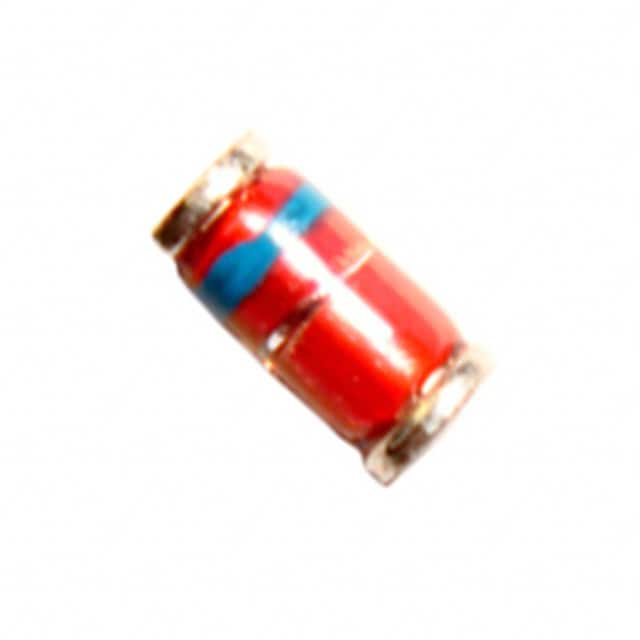DL4001 Product Overview
Introduction
The DL4001 is a diode belonging to the category of rectifier diodes. It is commonly used in electronic circuits for its specific characteristics and applications.
Basic Information Overview
- Category: Rectifier Diode
- Use: Conversion of alternating current (AC) to direct current (DC)
- Characteristics: High current capability, low forward voltage drop
- Package: DO-41
- Essence: Silicon rectifier diode
- Packaging/Quantity: Typically available in reels or bulk packaging
Specifications
- Maximum Average Forward Current: 1A
- Peak Reverse Voltage: 50V
- Forward Voltage Drop: 1V at 1A
- Operating Temperature Range: -65°C to +175°C
Detailed Pin Configuration
The DL4001 diode has two pins, anode, and cathode. The anode is typically marked with a band or other indicator on the body of the diode.
Functional Features
- Efficiently converts AC to DC
- Low forward voltage drop minimizes power loss
- High current capability allows for various applications
Advantages and Disadvantages
Advantages: - High current capability - Low forward voltage drop - Compact package size
Disadvantages: - Limited peak reverse voltage - Sensitive to reverse voltage spikes
Working Principles
The DL4001 operates based on the principle of semiconductor junction behavior. When a positive voltage is applied to the anode with respect to the cathode, the diode conducts and allows current flow in the forward direction. In the reverse bias condition, the diode blocks the current flow.
Detailed Application Field Plans
The DL4001 diode finds extensive use in various electronic circuits and devices, including: - Power supplies - Battery chargers - Voltage regulators - LED lighting systems
Detailed and Complete Alternative Models
- DL4002
- DL4003
- DL4004
- DL4005
In summary, the DL4001 rectifier diode offers efficient conversion of AC to DC with its high current capability and low forward voltage drop. While it has limitations in peak reverse voltage handling, its compact package and versatile applications make it a popular choice in electronic circuit design.
Word Count: 298
기술 솔루션에 DL4001 적용과 관련된 10가지 일반적인 질문과 답변을 나열하세요.
What is DL4001?
- DL4001 is a general-purpose diode commonly used in electronic circuits for rectification and signal demodulation.
What are the typical applications of DL4001?
- DL4001 is commonly used in power supplies, battery chargers, voltage clamping circuits, and low-frequency signal detection.
What are the key electrical characteristics of DL4001?
- The key electrical characteristics of DL4001 include a maximum repetitive peak reverse voltage of 50V, average forward current of 1A, and a forward voltage drop of approximately 1V at 1A.
How does DL4001 compare to other diodes in its class?
- Compared to other diodes in its class, DL4001 offers a balance of forward voltage drop, reverse leakage current, and recovery time, making it suitable for a wide range of applications.
Can DL4001 be used for high-frequency applications?
- DL4001 is not recommended for high-frequency applications due to its relatively slow recovery time.
What are the temperature considerations for DL4001?
- DL4001 has an operating temperature range of -65°C to +175°C, making it suitable for a variety of environmental conditions.
Are there any common failure modes associated with DL4001?
- Common failure modes for DL4001 include thermal runaway under high current conditions and reverse breakdown under excessive reverse voltage.
Can DL4001 be used in automotive electronics?
- Yes, DL4001 can be used in automotive electronics for applications such as voltage regulation and protection circuits.
What are some best practices for PCB layout when using DL4001?
- Best practices for PCB layout include minimizing trace lengths, providing adequate heat sinking, and ensuring proper clearance and isolation to prevent arcing.
Where can I find detailed specifications and application notes for DL4001?
- Detailed specifications and application notes for DL4001 can be found in the manufacturer's datasheet and application guides, which are available on their website or through authorized distributors.


